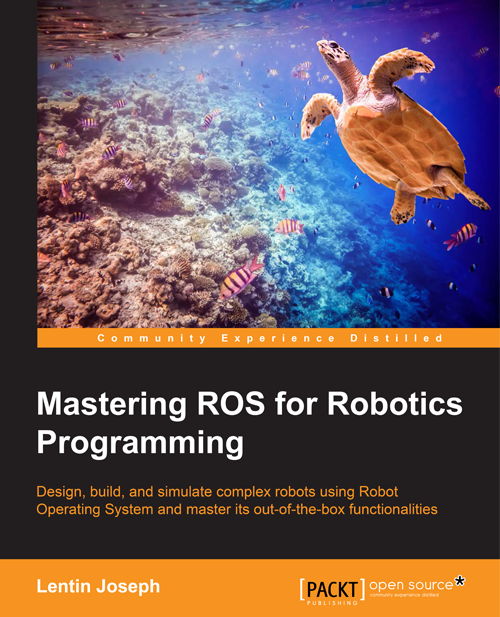Hi all
I couldn't blog in technolabz for one and half year, because i was busy with creating my Start up in Robotics called Qbotics Labs and writing my new book called "Learning Robotics using Python".
The cover page of the book is given below
 |
| Learning Robotics using Python |
About This Book
Design, simulate, build and program an interactive autonomous mobile robot
Program Robot Operating System using Python
Get a grip on the hands-on guide to robotics for learning various robotics concepts and build an advanced robot from scratch
Who This Book Is For
If you are an engineer, a researcher, or a hobbyist, and you are interested in robotics and want to build your own robot, this book is for you. Readers are assumed to be new to robotics but should have experience with Python.
What You Will Learn
- Understand the core concepts and terminologies of robotics
- Create 2D and 3D drawings of robots using freeware such as LibreCAD and Blender
- Simulate your robot using ROS and Gazebo
- Build robot hardware from the requirements
- Explore a diverse range of actuators and its interfacing
- Interface various robotic sensors to robots
- Set up and program OpenCV, OpenNI, and PCL to process 2D/3D visual data
- Learn speech processing and synthesis using Python
- Apply artificial intelligence to robots using Python
- Build a robot control GUI using Qt and Python
- Calibration and testing of robot
In Detail
Learning about robotics will become an increasingly essential skill as it becomes a ubiquitous part of life. Even though robotics is a complex subject, several other tools along with Python can help you design a project to create an easy-to-use interface.
Learning Robotics Using Python is an essential guide for creating an autonomous mobile robot using popular robotic software frameworks such as ROS using Python. It also discusses various robot software frameworks and how to go about coding the robot using Python and its framework. It concludes with creating a GUI-based application to control the robot using buttons and slides.
By the end of this tutorial, you'll have a clear idea of how to integrate and assemble all things into a robot and how to bundle the software package.
Authors
Lentin Joseph
Lentin Joseph is an electronics engineer, robotics enthusiast, machine vision expert, embedded programmer, and the founder and CEO of Qbotics Labs (http://www.qboticslabs.com) in India. He got his bachelor's degree in electronics and communication engineering at the Federal Institute of Science and Technology (FISAT), Kerala. In his final year engineering project, he created a social robot, which can interact with people. The project was a huge success and got mentioned in visual and print media. The main feature of this robot was that it could communicate with people and reply intelligently. It also has some image-processing capabilities, such as face, motion, and color detection. The entire project was implemented using the Python programming language. His interest in robotics, image processing, and Python began this project.
After graduation, he worked at a start-up company based on robotics and image processing for 3 years. In the meantime, he learned famous robotic software platforms—such as Robot Operating system (ROS), V-REP, and Actin (a robotic simulation tool)—and image processing libraries, such as OpenCV, OpenNI, and PCL. He also knows about robot 3D designing, embedded programming on Arduino, and Stellaris Launchpad.
After 3 years of work experience, he started a new company called Qbotics Labs, which is mainly focused on research to build great products in domains such as wearable technology, robotics, machine vision, green technology, and online education. He maintains a personal website (http://www.lentinjoseph.com) and a technology blog called technolabsz (http://www.technolabsz.com). He publishes his works on his tech blog. He was a speaker at PyCon2013 India, and he spoke on the topic of learning robotics using Python.










